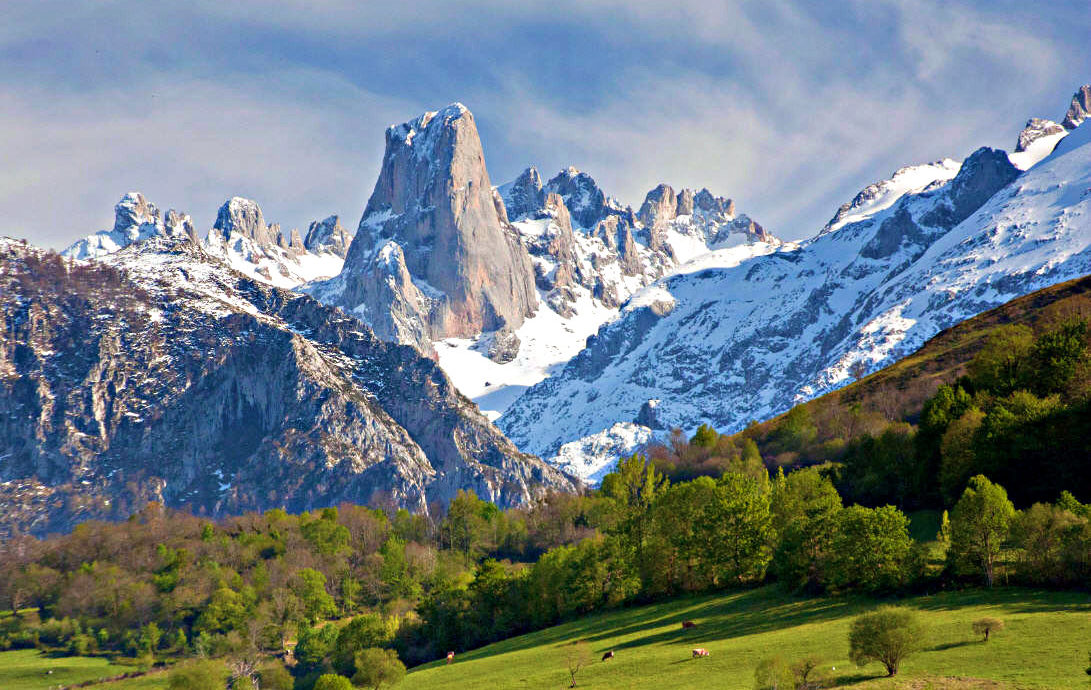Why are Picos De Europa Mountains So Prominent?
Unveiling Nature's Majesty: The Geological Secrets Behind Picos de Europa's Prominence
Picos De Europa Mountains

Rising majestically amidst the rugged landscapes of northern Spain, the Picos de Europa Mountains stand as a symbol of nature’s grandeur and geological complexity. Spanning approximately 20 kilometers, this iconic mountain range forms part of the Cantabrian Mountains and is situated within the Autonomous Communities of Asturias, Cantabria, and Castile and León. At the heart of this enchanting landscape lies the towering Torre de Cerredo, the highest peak reaching an elevation of 2650 meters. In this comprehensive exploration, we delve into the geological wonders that have shaped the prominence of the Picos de Europa Mountains, unraveling the mysteries of their formation and enduring allure.
Geological Origins:
- Tectonic Activity: The geological history of the Picos de Europa Mountains dates back millions of years to a time when the Earth’s crust was in a constant state of flux. The Cantabrian Mountains, of which the Picos de Europa are a prominent subrange, were formed through a series of tectonic collisions and uplift events during the Paleozoic Era, approximately 541 to 252 million years ago.
- Limestone Formation: One of the defining features of the Picos de Europa Mountains is their composition of limestone, a sedimentary rock formed from the accumulation of marine organisms over millions of years. During periods of geological upheaval, layers of sediment were compressed and uplifted, giving rise to the towering cliffs and rugged peaks that characterize the landscape of the Picos de Europa.
- Karst Topography: The unique geological structure of the Picos de Europa Mountains has resulted in the formation of karst topography, characterized by underground drainage systems, caves, and sinkholes. Over time, the dissolution of limestone by groundwater has sculpted the landscape, creating dramatic features such as deep gorges and limestone pavements. Just as we Why are Pindus Mountains So Prominent?
Erosional Processes:
- Glacial Activity: During the Pleistocene Epoch, approximately 2.6 million to 11,700 years ago, the Picos de Europa Mountains were covered by glaciers that sculpted the landscape through a process of glacial erosion. As these massive ice sheets advanced and retreated, they carved out U-shaped valleys, cirques, and moraines, leaving behind the distinctive features that we see today.
- River Erosion: The rivers and streams that flow through the Picos de Europa Mountains have also played a significant role in shaping the landscape through erosional processes. Over millions of years, these watercourses have cut deep gorges and canyons into the limestone bedrock, creating stunning natural wonders such as the Cares Gorge and the Deva River Canyon.
- Weathering and Mass Movement: Weathering processes, including freeze-thaw cycles and chemical weathering, have contributed to the ongoing evolution of the Picos de Europa Mountains. In addition, mass movement events such as rockfalls, landslides, and debris flows are common in the mountainous terrain, shaping the landscape through the redistribution of sediment and rock.
Cultural Significance:
- Tourism and Recreation: The prominence of the Picos de Europa Mountains extends beyond their geological significance to encompass their cultural and recreational value. Today, the mountains are a popular destination for outdoor enthusiasts, offering a wide range of activities such as hiking, rock climbing, mountaineering, and wildlife watching. The region also attracts tourists seeking to explore its picturesque villages, traditional cuisine, and rich cultural heritage.
- Conservation Efforts: Recognizing the ecological importance of the Picos de Europa Mountains, efforts have been made to conserve and protect the region’s natural resources. In 1918, the Picos de Europa National Park was established as Spain’s first national park, encompassing a vast expanse of pristine wilderness and diverse ecosystems. Today, the park is a UNESCO Biosphere Reserve and a haven for biodiversity, supporting a wide range of flora and fauna, including endangered species such as the Cantabrian brown bear and the Iberian wolf.
Conclusion:
In conclusion, the prominence of the Picos de Europa Mountains is a testament to the dynamic forces of geology and the enduring beauty of nature. From their ancient origins as a product of tectonic activity to their sculpted peaks and valleys shaped by erosional processes, the mountains are a testament to the geological history of northern Spain. Beyond their geological significance, the Picos de Europa hold cultural and recreational value, attracting visitors from around the world to explore their rugged beauty and rich heritage. As we continue to marvel at the wonders of this iconic mountain range, we are reminded of the power and resilience of the natural world, and the importance of preserving it for future generations to enjoy.
Know More about Picos De Europa Mountains.
What Are The Tourist Places Nearest to Picos De Europa Mountains?
When Were Picos De Europa Mountains Formed?
Where Are Picos De Europa Mountains Located?
Who Discovered Picos De Europa Mountains?
How to Reach Picos De Europa Mountains?




